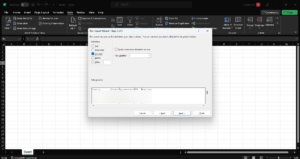Imagine a fortress of technological prowess, where your organization’s automation processes are shielded within your own infrastructure. With on-premise automation, you hold the keys to a kingdom fortified against external threats, ensuring that your sensitive data remains safe and sound.
In this blog post, we will explore the benefits of on-premises automation, how some industries require it and what the future holds.
What is On-Premises Automation?
On-premises automation refers to the process of automating various tasks and processes within an organization using software and hardware that is installed on the organization’s own servers or data centers. This type of automation is becoming increasingly popular among businesses and organizations, as it provides greater control and security over sensitive data and processes.
While on-premise automation offers greater control over the infrastructure and data, it can also be more expensive and less scalable than cloud-based automation.
Many companies in heavily regulated industries, like Healthcare, Banking, and Government agencies, prefer on-premises automation as it offers the highest level of security and privacy.
Looking to automate your manual AP Processes? Get a 7-day free trial to see how Nanonets can help your team implement end-to-end AP automation.
Key Components
- Servers and Hardware: On-premise automation typically involves the use of dedicated servers and hardware within the company’s own infrastructure. These servers serve as the foundation for hosting and running automation software and applications.
- Automation Software: The automation software forms the core component of on-premise automation. It includes tools and platforms designed to automate various business processes and tasks. This software can range from specialized automation solutions for specific functions (such as robotic process automation) to comprehensive business process management suites.
- Local Network Infrastructure: On-premise automation relies on the company’s local network infrastructure, including switches, routers, firewalls, and other networking components. These components ensure secure communication between different systems and devices involved in the automation processes.
- Database Management System: A database management system (DBMS) is a crucial component in on-premise automation. It stores and manages the data required for automation processes, ensuring data integrity, security, and efficient retrieval when needed.
- Integration and Connectivity Tools: On-premise automation often requires integration with existing systems and applications within the company’s infrastructure. Integration tools and middleware facilitate the seamless exchange of data and communication between different software applications, ensuring smooth workflow automation.
- Security Measures: Security is a critical component of on-premise automation. It involves implementing measures such as firewalls, intrusion detection systems, access controls, encryption, and other security protocols to protect sensitive data and ensure the integrity and confidentiality of automation processes.
- Monitoring and Reporting: Monitoring and reporting tools provide visibility into the performance and effectiveness of on-premise automation processes. These tools track and analyze various metrics and generate reports to help identify bottlenecks, optimize workflows, and ensure compliance with predefined performance indicators.
- Administration and Management Tools: On-premise automation requires administrative tools to manage and configure automation workflows, user access controls, system settings, and other aspects of the automation environment. These tools enable IT administrators to monitor, maintain, and control the automation infrastructure effectively.
- Backup and Disaster Recovery: Implementing robust backup and disaster recovery mechanisms is essential for on-premise automation. This includes regular backups of automation configurations, data, and system settings, as well as establishing recovery plans and procedures to minimize downtime and data loss in the event of system failures or disasters.
- Documentation and Knowledge Base: Maintaining comprehensive documentation and a knowledge base is crucial for successful on-premise automation. It includes documenting automation processes, configurations, system architectures, troubleshooting procedures, and best practices. This documentation aids in training new users, ensuring consistency, and providing a reference for future enhancements or modifications.
Benefits of On-Premise Automation
Increased Security
One of the main benefits of on-premise automation is that it provides greater security for sensitive data and processes. With on-premises automation, businesses can control who has access to their data and ensure that it is protected from external threats such as cyber-attacks and data breaches.
Greater Control
On-premises automation also provides businesses with greater control over their processes and workflows. With on-premises automation, businesses can customize their automation processes to meet their specific needs and requirements, which can help improve efficiency and productivity.
Improved Compliance
Many businesses operate in industries that are heavily regulated, such as healthcare or finance. On-premise automation can help these businesses ensure that they are meeting all regulatory requirements by automating compliance-related tasks and processes.
Increased Efficiency
On-premises automation can help businesses streamline their operations and reduce the time and resources required to complete tasks. By automating repetitive tasks and processes, businesses can free up their employees to focus on more important tasks that require human input.
Cost Savings
On-premises automation can also help businesses save money by reducing the need for manual labor and increasing efficiency. By automating tasks and processes, businesses can reduce the number of employees required to complete these tasks, which can help reduce labor costs.
Book this 30-min live demo to make this the last time that you’ll ever have to manually key in data from invoices or receipts into ERP software.
Disadvantages of On-Premises Automation
On-premises automation has several drawbacks that businesses should consider before implementing it. One of the main drawbacks is the high upfront costs associated with purchasing and maintaining the necessary hardware and software. Additionally, on-premises automation requires businesses to have a dedicated IT team to manage and maintain the automation system, which can be costly and time-consuming.
Another disadvantage of on-premises automation is the lack of scalability compared to cloud-based automation. With on-premises automation, businesses are limited by the capacity of their servers and hardware, which can be a problem if they need to scale up quickly.
On-premise automation operates within the company’s local network, which may limit accessibility for remote or distributed teams. Cloud-based automation solutions enable users to access and manage automation processes from anywhere with an internet connection, fostering collaboration and flexibility.
Lastly, on-premises automation can be more vulnerable to security threats than cloud-based automation. With on-premises automation, businesses are responsible for securing their own servers and data centers, which can be a challenge for smaller businesses with limited resources/
In conclusion, while on-premises automation offers several benefits, including increased security and greater control, it also has several drawbacks that businesses should consider before implementing it. These include high upfront costs, limited scalability, and increased vulnerability to security threats.

On-Premises vs Cloud vs Hybrid Automation
Cloud, on-premises, and hybrid automation are three different approaches to deploying automation software and infrastructure.
Cloud automation involves deploying automation software and infrastructure in the cloud, which means that the software and infrastructure are hosted and managed by a third-party provider. This approach offers scalability, flexibility, and cost-effectiveness, but it can also raise security and privacy concerns.
On-premises automation involves deploying automation software and infrastructure on an organization’s premises, which means that the software and infrastructure are hosted and managed internally by the organization. This approach offers greater control and security, but it can also be more expensive and less scalable than cloud-based automation.
Hybrid automation involves a combination of both cloud and on-premises automation. This approach allows businesses to leverage the benefits of both cloud and on-premises automation, such as scalability and control, respectively. Hybrid automation offers greater flexibility and can be a good option for businesses that have unique requirements or need to balance security and scalability concerns.
The Future of On-Premises Automation
Hybrid Approaches: As mentioned before, hybrid approaches to on-premises automation exist. It combines the benefits of both on-premise and cloud-based solutions. This allows organizations to leverage the scalability and accessibility of the cloud while maintaining critical data and processes on-premise for enhanced security and control.
Edge Computing Integration: As the demand for real-time and low-latency automation increases, the integration of edge computing with on-premise automation is becoming more prevalent. Edge computing brings computation and data storage closer to the data source, enabling faster processing and decision-making for time-sensitive automation tasks.
AI and Machine Learning Integration: On-premise automation systems are likely to incorporate more advanced AI and machine learning capabilities. These technologies can enhance automation processes by enabling intelligent decision-making, predictive analytics, and adaptive workflows that learn and optimize based on data patterns.
Interoperability and Standardization: Future on-premise automation solutions will focus on improving interoperability and standardization, allowing seamless integration with different systems, applications, and devices. This will enable organizations to achieve more comprehensive automation across diverse environments and technologies.
Intelligent Robotic Process Automation (RPA): On-premise automation will see an increase in the adoption of intelligent RPA, where software robots can handle more complex tasks through natural language processing, computer vision, and cognitive capabilities. This enables the automation of intricate workflows that require human-like decision-making and problem-solving.
Advanced Analytics and Reporting: Future on-premise automation solutions will provide enhanced analytics and reporting capabilities, offering deeper insights into automation performance, resource utilization, and process optimization. This data-driven approach will enable organizations to make informed decisions and continuously improve their automation initiatives.
Green Automation: With a growing emphasis on sustainability, on-premise automation will focus on energy efficiency and environmental impact. This includes optimizing resource utilization, reducing power consumption, and adopting eco-friendly practices in the design and operation of on-premise automation infrastructure.
Tired of manually entering data into ERPs or accounting software? Let us show you how you can automate your entire AP data workflow in seconds.
Ultimately, the choice between on-premise and cloud-based automation depends on factors such as data sensitivity, regulatory compliance, customization requirements, and budget considerations. By carefully evaluating these factors and understanding the unique needs of their industry, companies can make an informed decision on whether on-premise automation is the right choice for their business.
- SEO Powered Content & PR Distribution. Get Amplified Today.
- EVM Finance. Unified Interface for Decentralized Finance. Access Here.
- Quantum Media Group. IR/PR Amplified. Access Here.
- PlatoAiStream. Web3 Data Intelligence. Knowledge Amplified. Access Here.
- Source: https://nanonets.com/blog/on-premises-automation/
- :has
- :is
- :where
- $UP
- 7
- a
- access
- accessibility
- Accounting
- Achieve
- across
- Additionally
- administrative
- administrators
- Adopting
- Adoption
- advanced
- against
- agencies
- AI
- aids
- All
- Allowing
- allows
- also
- among
- an
- analytics
- analyze
- and
- and infrastructure
- anywhere
- applications
- approach
- approaches
- ARE
- AS
- aspects
- associated
- automate
- automating
- Automation
- Backup
- backups
- Balance
- Banking
- base
- based
- BE
- becoming
- before
- benefits
- BEST
- best practices
- between
- Blog
- both
- breaches
- Brings
- budget
- business
- Business Process
- businesses
- but
- by
- CAN
- capabilities
- Capacity
- carefully
- Centers
- challenge
- choice
- closer
- Cloud
- cognitive
- collaboration
- COM
- combination
- combines
- Communication
- Companies
- company
- compared
- complete
- complex
- compliance
- component
- components
- comprehensive
- computation
- computer
- Computer Vision
- computing
- Concerns
- conclusion
- confidentiality
- connection
- Connectivity
- Consider
- considerations
- consumption
- continuously
- control
- controls
- Core
- costly
- Costs
- critical
- crucial
- customization
- customize
- data
- Data Breaches
- data centers
- data loss
- data storage
- data-driven
- Database
- Death
- decision
- Decision Making
- decisions
- dedicated
- deeper
- Demand
- demo
- depends
- deploying
- Design
- designed
- Detection
- Devices
- different
- Disadvantage
- disaster
- disasters
- distributed
- diverse
- documentation
- downtime
- drawbacks
- Eco-friendly
- Edge
- edge computing
- effectively
- effectiveness
- efficiency
- efficient
- emphasis
- employees
- enable
- enables
- enabling
- encryption
- end-to-end
- energy
- enhance
- enhanced
- enhancements
- ensure
- ensuring
- entering
- Entire
- Environment
- environmental
- environments
- ERP
- ERP Software
- essential
- establishing
- evaluating
- Event
- EVER
- exchange
- exist
- existing
- expensive
- explore
- external
- facilitate
- factors
- faster
- finance
- firewalls
- Flexibility
- Focus
- For
- forms
- Fortress
- fostering
- Foundation
- Free
- free trial
- from
- functions
- future
- generate
- get
- good
- Government
- greater
- greater security
- Growing
- guide
- handle
- Hardware
- Have
- healthcare
- heavily
- help
- High
- highest
- hold
- holds
- hosted
- hosting
- How
- HTTPS
- human
- Hybrid
- identify
- if
- Impact
- implement
- implementing
- important
- improve
- improving
- in
- include
- includes
- Including
- incorporate
- Increase
- increased
- Increases
- increasing
- increasingly
- Indicators
- industries
- industry
- informed
- Infrastructure
- initiatives
- input
- insights
- installed
- integration
- integrity
- Intelligent
- internally
- Internet
- internet connection
- Interoperability
- into
- involved
- IT
- Key
- keys
- Kingdom
- knowledge
- labor
- Lack
- language
- Last
- LEARN
- learning
- less
- let
- Level
- Leverage
- like
- likely
- LIMIT
- Limited
- live
- ll
- local
- loss
- machine
- machine learning
- Main
- maintain
- Maintaining
- make
- manage
- managed
- management
- Management Tools
- manages
- manual
- manually
- May..
- me
- means
- measures
- mechanisms
- Meet
- meeting
- mentioned
- Metrics
- Modifications
- money
- Monitor
- more
- Natural
- Natural Language Processing
- necessary
- Need
- needed
- needs
- network
- networking
- New
- new users
- number
- of
- offering
- Offers
- often
- on
- ONE
- operate
- operates
- operation
- Operations
- optimization
- Optimize
- optimizing
- Option
- or
- organization
- organizations
- Other
- over
- own
- patterns
- performance
- plans
- Platforms
- plato
- Plato Data Intelligence
- PlatoData
- Popular
- Post
- power
- practices
- Predictive Analytics
- prefer
- prevalent
- privacy
- Problem
- problem-solving
- procedures
- process
- Process Automation
- processes
- processing
- productivity
- protect
- protected
- protocols
- provide
- provider
- provides
- providing
- prowess
- purchasing
- quickly
- raise
- range
- real-time
- receipts
- recovery
- reduce
- reducing
- refers
- regular
- regulated
- regulated industries
- regulatory
- Regulatory Compliance
- remains
- remote
- repetitive
- Reporting
- Reports
- require
- required
- Requirements
- requires
- resource
- Resources
- respectively
- responsible
- right
- Robotic Process Automation
- robots
- robust
- rpa
- running
- s
- safe
- Save
- Scalability
- scalable
- Scale
- seamless
- seconds
- secure
- securing
- security
- Security threats
- see
- sensitive
- Sensitivity
- serve
- Servers
- settings
- several
- should
- show
- smaller
- smooth
- Software
- Solutions
- some
- Sound
- Source
- specialized
- specific
- Star
- storage
- stores
- streamline
- successful
- such
- Sustainability
- system
- Systems
- tasks
- team
- teams
- technological
- Technologies
- than
- that
- The
- The Future
- their
- These
- they
- third-party
- this
- threats
- three
- Through
- time
- time-consuming
- time-sensitive
- to
- tools
- track
- Training
- trial
- type
- typically
- understanding
- unique
- Unsplash
- us
- use
- User
- users
- using
- various
- visibility
- vision
- vs
- vulnerability
- Vulnerable
- we
- WELL
- What
- What is
- when
- whether
- which
- while
- WHO
- will
- with
- within
- workflow
- workflows
- You
- Your
- zephyrnet












